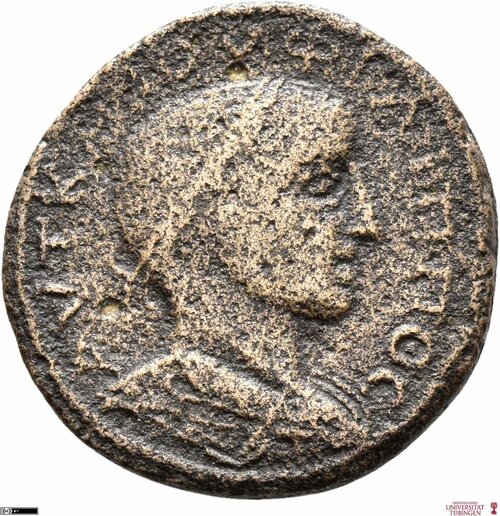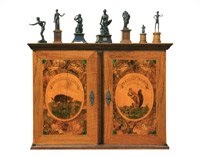Front: Drapierte PanzerbĂĽste des Philippus II. mit Lorbeerkranz in der RĂĽckenansicht nach r.
Rear: Nike mit Kranz und Palmzweig schreitend nach l. ΓKC entspricht dem Jahr 223 der Wiederaufbau-Ära nach Erdbeben, ab 24-25 n. Chr. (247 n. Chr.).
en

